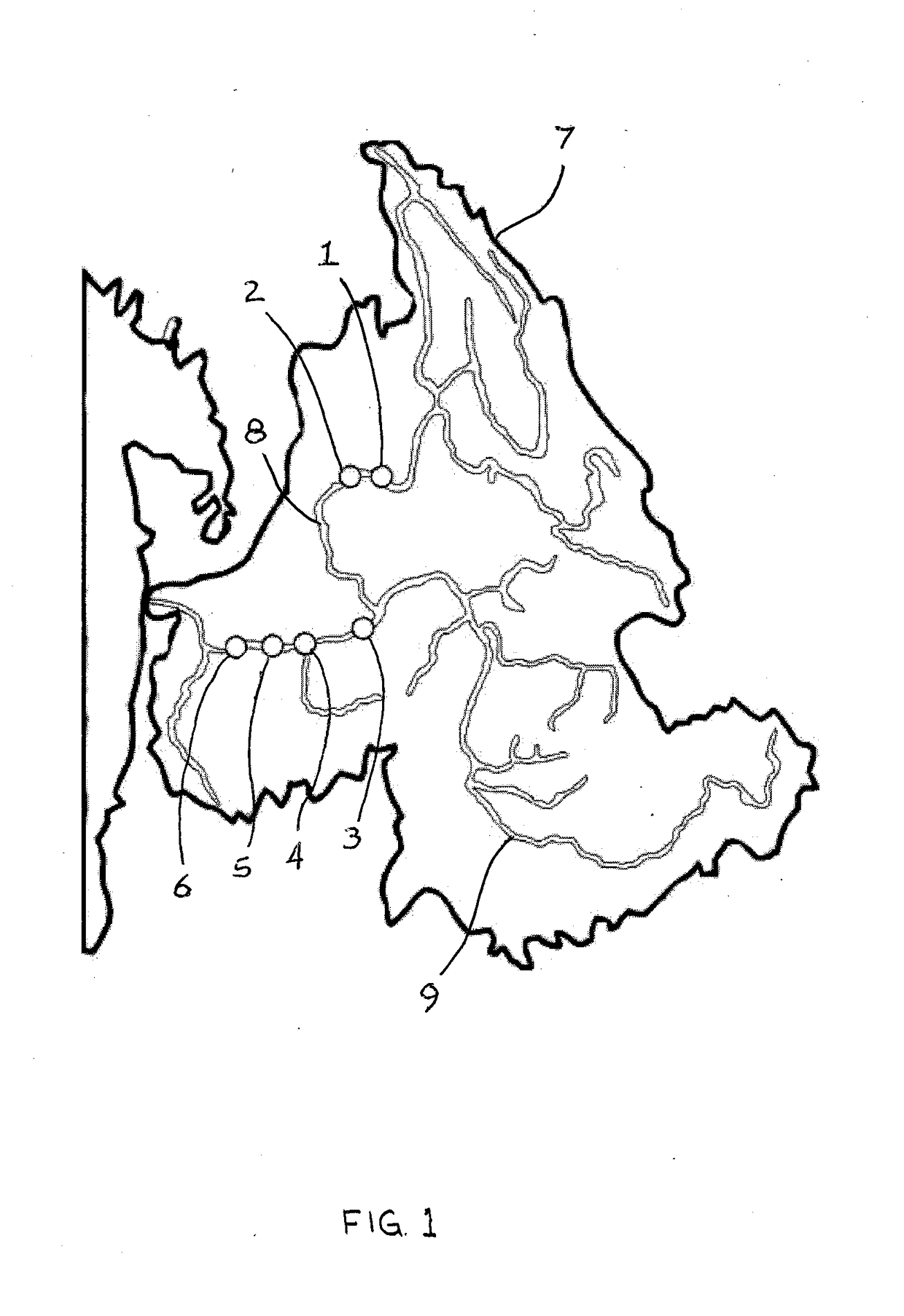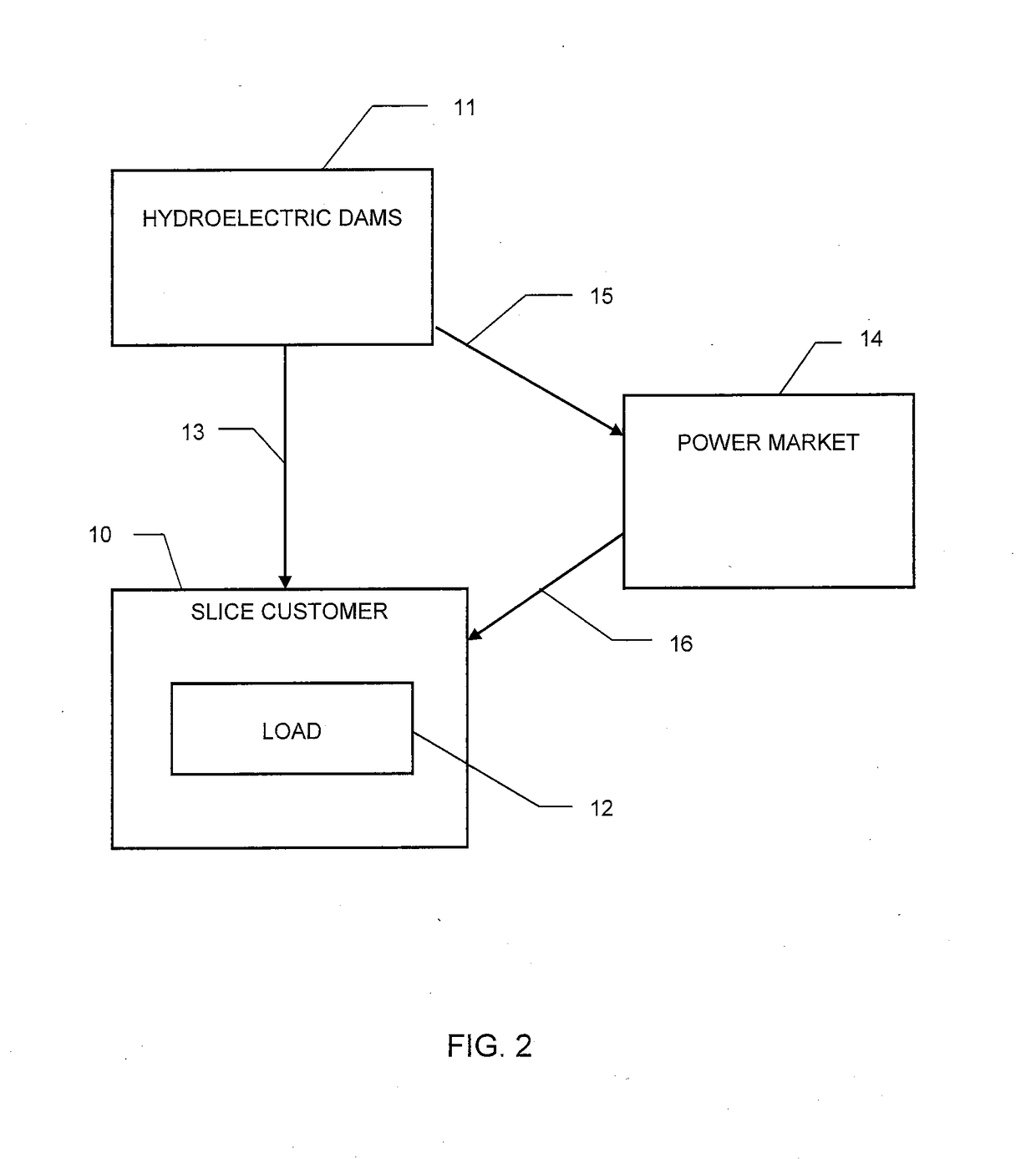Method for management and optimization of hydropower generation and consumption
a technology of hydropower generation and optimization, applied in the direction of process and machine control, instruments, computer control, etc., can solve the problems of uncertainty in every plan and inability to work, and achieve the effect of generating feasible schedules quickly
- Summary
- Abstract
- Description
- Claims
- Application Information
AI Technical Summary
Benefits of technology
Problems solved by technology
Method used
Image
Examples
Embodiment Construction
[0077]With reference to the drawings, the optimization and management system and method will now be described with regard for the best mode and the preferred embodiment. In general, the optimization and management system and method described herein uses a global linearization approach and mixed integer linear programming to optimize the hydropower generation levels, perform the dispatch, and schedule the multi-dam hydropower generation system for a look-ahead period while subject to real world, hourly physical, biological, environmental, and recreational constraints.
[0078]The embodiments of the system and method for management and optimization of hydropower power generation and consumption taught herein were developed in the particular environment of the Columbia River 8 watershed system. Accordingly, it is believed that a clearer understanding will be obtained by relating the following exemplary embodiments to this watershed system. For convenience of the following description, ter...
PUM
 Login to View More
Login to View More Abstract
Description
Claims
Application Information
 Login to View More
Login to View More - R&D
- Intellectual Property
- Life Sciences
- Materials
- Tech Scout
- Unparalleled Data Quality
- Higher Quality Content
- 60% Fewer Hallucinations
Browse by: Latest US Patents, China's latest patents, Technical Efficacy Thesaurus, Application Domain, Technology Topic, Popular Technical Reports.
© 2025 PatSnap. All rights reserved.Legal|Privacy policy|Modern Slavery Act Transparency Statement|Sitemap|About US| Contact US: help@patsnap.com



